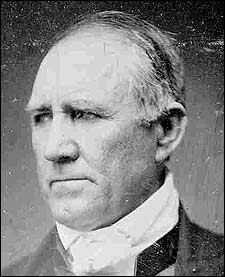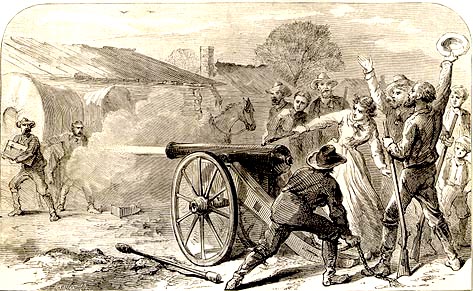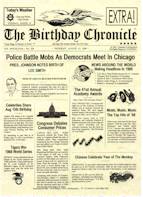
Texas Author and Historian Leonard Kubiak of Rockdale.
CAPITALS OF TEXAS
HISTORY OF HOUSTON, TEXAS

Summary

Sam Houston, the namesake for Houston Texas.
The territory that eventually became Texas was governed from many different countries and capitols. This webpage traces the history of these capitols from the time that "the new world" was discovered by Europeans to modern day Texas.
Native American Government
The earliest known inhabitants of the territory that became Texas made little claim to individual ownership of land. They belived that the land was a gift from the Great Spirit intended to be used by all men. However various tribes laid claim to hunting lands and farming areas which they defended with their lives.
The closest thing to an Indian formed government can be traced to the Caddo nations of the eastern half of Texas. Other major tribes laid claim to different sections of Texas including the Tonkawa nation and the Apache Nation.
EUROPEAN CAPITOLS OF TEXAS
With the discovery of the New World by Columbus, Spain laid claim to the territory would become Texas and the governing capitols were Valladolid and Madrid.
Then the French laid claim to part of the Texas territory and the Capitol was
Paris, France.
With the successful overthrow of the French and Spanish, Mexico became the governing body for the Texas Territory with the capital in Mexico City.
Monclova, Coahuila, Mexico Becomes first Provintial Capitol of the Texas Territory (1686)
In 1686, Monclova, Coahuila, Mexico, became the first provincial capitol for the area that became Texas. While Texas was associated with Spain and the Republic of Mexico, its government was centered in Coahuila, which alternately had Monclova and Saltillo as its provincial capital.
In 1721-22 Marqu�s de Aguayo, governor of Coahuila which included the territory of Texas, led an expedition north of the Rio Grande and established the presidio of Los Adaes a short distance east of the Sabine River on the site of present-day Robeline, Louisiana. Los Adaes became the capital of Texas and remained so for half a century.
San Antonio Becomes Provintial Capitol of the Texas Territory (1772)
The seat of government was moved to San Antonio in 1772, where it remained until 1824. For two short periods during this time, the administrators of Coahuila y Texas conducted business from La Casa Piedra (today commonly called the Old Stone Fort) in Nacogdoches: Manuel Antonio Cordero y Bustamante in 1806 and Manuel Mar�a de Salcedo for three months in 1810.
After Mexico became independent of Spain in 1821, Texas was again united with Coahuila, of which Saltillo was then the capitol. The first state congress convened there Aug. 15, 1824. The capitol of Coahuila-Texas was moved to Monclova, March 9, 1833.
San Felipe de Austin Became Capitol of the first Anglo-American Colony in Texas
The capitol of the first Anglo-American colony in Texas was San Felipe de Austin. The conventions of 1832 and 1833, as well as the Consultation of 1835 met at San Felipe, which continued to be the official headquarters until March 1, 1836.
Capitols of the Republic of Texas
With the struggle for independence, Republic of Texas had seats of government at
San Felipe de Austin, Washington-on-the-Brazos, Harrisburg, Galveston Island, Velasco, Columbia, Houston and Austin.
Washington-on-the-Brazos, Site of Constitutional Convention (March 1, 1836)
The provisional government of the Republic of Texas met at Washington-on-the-Brazos March 1, 1836. This convention, in which all powers of sovereignty were claimed and exercised, adopted the Declaration of Independence on March 2. They also wrote a constitution and inaugurated executive officers.
Harrisburg Near Present Day Houston Named Temporary Capitol
General Houston and his army were being pursued by Santa Anna and the Mexican Army.
Because of the movement of Santa Anna's troops, President Burnet selected Harrisburg on Buffalo Bayou near present day Houston as the temporary capitol.
Steamboat Cayuga at Harrisburg Becomes de facto Capitol of Texas (April 15-26, 1836)
As Mexican troops moved eastward after their victory at the Alamo, President Burnet and part of his cabinet boarded the steamboat Cayuga at Harrisburg on April 15, 1836, making it the de facto capitol of the Republic until the Texas officials went ashore at Galveston on April 26.
Velasco Temporary Capitol of Texas (April 26- October 1836)
When the Republic of Texas officials went ashore at Galveston on April 26, 1836 the temporary capitol of Texas was reassigned to Velasco until October.
In October 1836, Columbia (today's West Columbia) became the first capital of an elected government of the Republic of Texas. President Houston, on Dec. 15, 1836, ordered the seat of government removed to Houston.
Houston Designated Temporary Capital of Texas in 1837
The city was incorporated by the state legislature on June 5, 1837 and designated the temporary capital of Texas. Sam Houston, the first elected President of the Republic of Texas wanted to keep the capital of Texas in Houston.
However, early-day Houston had a reputation as a lawless town and then was dealt a terrible hand with the yellow feaver outbreak that killed over 10 percent of the Houston population. As a result, this frontier Texas town lost out in the battle to become the permanent capital of Texas.
Austin Designated Capitol Site in 1839
In 1839, the Capitol Commission selected the "site of the town of Waterloo, on the north bank of the Colorado" as the permanent capital. This was confirmed by the Texas Congress Jan. 19, 1839, and the place was renamed Austin in honor of Stephen F. Austin. President Mirabeau B. Lamar and his cabinet moved there October 17, 1839.
Capital of Texas Moved by Wagon Train to Austin Near Waterloo
In 1839, Mirabeau B. Lamar replaced Sam Houston as president of Texas and pushed for a new capital in the central part of Texas. A site was chosen along the Colorado River near the tiny settlement of Waterloo. Within the year, Lamar had moved to the new capital, now called Austin, and Congress was meeting in log buildings in the frontier town of Austin. Forty wagons carried the government archives from Houston to their new home in Austin.
In 1841, Sam Houston again became president. He often described Austin as "the most unfortunate site on earth for a seat of government," and refused to move in to the official residence but instead roomed at a boarding house run by Mrs. Angelina Eberly.
Texas Invaded by Mexican Army in 1842
In the summer of 1842, the Mexican army invaded Texas and took control of San Antonio, Goliad, and Victoria. President Houston called a special session of Congress to meet in Houston, arguing that Austin was defenseless against Mexican attack. He also ordered the secretary of state to remove the archives back to Houston.
However the move to Houston was not to be. The citizens of Austin formed a vigilante "Committee of Safety" and warned the heads of government in Austin that any attempts to move the official papers would be met with armed resistance.
In December 1842, Houston announced that Austin was no longer the capital and ordered Colonel Thomas I. Smith and Captain Eli Chandler to Austin to remove the archives. Smith and Chandler and 20 men loaded three wagons without incident before being spotted by Mrs. Eberly. She fired a cannon to alert the citizens of Austin.

Angelina firing a cannon to alert Austin citizens that the archives were being moved (December 1842).
Smith and Chandler fled with their wagons, with the vigilantes in hot pursuit. At Brushy Creek in Williamson County, near Round Rock, Chandler and Smith were forced to surrender at gunpoint. The archives were returned to Austin, where the citizens celebrated with a New Year's Eve party.
Washington on the Brazos Temporary Capitol of Texas (1843-1844)
The Republic of Texas government then moved the capitol to Washington on-the-Brazos until Austin became capitol again in 1844.
Austin Designated Permanent Capitol of Texas by Vote in 1850
The location of the Texas capitol was not completely settled until 1850, when Texans voted by a large majority to make Austin the permanent seat of government.
Early Day Capitol Buildings Still Standing
The Spanish Governors' palace at San Antonio is the last of the early day Capital buildings of Texas. A replica of the one-story frame building that served as the Capitol at Columbia has been built at West Columbia and similarly a replica of the original Texas constitutional convention center has been placed at the part at Washington-on-the-Brazos.
A frame structure where the Rice Hotel stands today was the Capitol near Houston.
When Austin was selected as the capital, several log buildings were used until the first permanent structure was erected. This burned Nov. 9, 1881, and a temporary Capitol located off the Capitol grounds at the head of Congress Avenue served until completion of the present structure, which was opened May 16, 1888.
|


 For questions or comments, send me an Email at lenkubiak.geo@yahoo.com
For questions or comments, send me an Email at lenkubiak.geo@yahoo.com

 Return to the Fort Tumbleweed Home Page
Return to the Fort Tumbleweed Home Page























